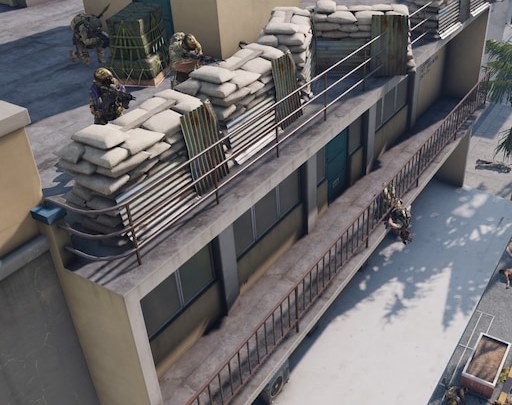Live Classes

Two banks collapsed in the US recently. After the bankruptcy of Silicon Valley Bank (SVB), located in California, USA, Signature Bank of New York was also locked. The failure of Silicon Valley Bank and Signature Bank in the US has raised questions about the safety of depositors’ money everywhere. On March 7, Silicon Valley bank celebrated being ranked among America’s best banks by Forbes magazine but went bankrupt when it collapsed on March 10. For the last five years, this bank has been winning the Best Bank Award. The Federal Deposit Insurance Corporation has been appointed as the receiver of this bank, which will sell its assets and return the money to the investors
Reasons for collapse
Banks’ balance sheets were loaded with low-interest bonds. The failure can be clearly classified as an ‘asset-liability mismatch’. Actually, this bank used to take deposits from startups, and either gave them as loans to needy startups or invested them. SVB had invested this money in US bonds, and after the raising of interest rates by the Federal Bank, the bonds started falling. As a result, when there was a recession in the US, startups began withdrawing their money from the bank. To finance startups, the bank sold bonds worth USD 21 billion at a loss of Rs 15,000 crore, and eventually went bankrupt. The world’s renowned IT startups and venture capital firms know Silicon Valley Bank very well.
The bank was started in 1983. The main work of this bank was to invest money in startups around the world. Bankruptcy of Silicon Valley Bank, the largest bank for the startup ecosystem, has created uncertainty in the sector overnight and is expected to adversely impact India’s startup landscape as well. Most Indian startups doing business in the US take the services of this bank. The founders of every third startup in Silicon Valley are Indian-Americans. More than 60 Indian startups are facing financial crisis, in which there are 40 startups that have deposits of Rs two crore to Rs eight crore in this bank. So, they will need a new source of working capital for some time.
Worldwide wave
Not only the American companies have been affected by the collapse of the bank, but companies in Britain, Canada, Singapore, etc. have also been affected. People are reminded of the collapse of Lehman Brothers in 2008. The sinking of two major American banks has caused a huge decline in the global market. Investors lost over Rs 7.3 lakh crore in three trading sessions. The Bank Nifty (which measures the value of banks) in India fell nearly 1,800 points.
Lessons for Indian banks
Short-term borrowing and lending puts banks at risk. To manage risks, banks use maturity and tenor transformation. A bank’s efficiency is measured by how inexpensively it manages transformation risks. Risk-management strategies are institutionalised by regulators and banks to handle asset liability management (ALM), the most critical and immediate risk-management activity. Proactive risk management techniques must account for high inflation, rising interest rates, and limited liquidity in order to implement the best governance, risk, and compliance practices (GRCP).
Market risk is the fastest-growing and most serious risk for banks. Banks must regularly practise ALM and develop simulated stress tests. Changing the company mix necessitates the creation of scenarios and the execution of stress tests on capital sufficiency. ALM’s long-term perspective aids in crisis avoidance. In hostile market conditions, asset and liability pricing, structural liquidity monitoring, and simulated and real gaps must be addressed. If the risk to the company increases, control hazards must be strengthened.
In an environment of rising interest rates, when bonds purchased at low interest rates result in low yield and losses, SVB should rethink how they will handle a rare deposit outflow on a regular basis — especially given how little banking accounts for SVB’s revenue and how much the trading does. As a result, market risk outweighs credit risk for the bank. Risk-management is all about unexpected risk events, not happy times. The entire financial system will benefit if regulators can work together to save SVB. This risk event has made several institutions aware of the dangers of ALM. To avoid significant risk events, Indian banks should audit and manage their ALM properly.
Way forward
The failure of the bank has made everyone curious if it will hurt India. In a globalised world, every economic event has effects, whether they are good or bad, and most of them have to do with the United States. In the future, the Indian financial system could be hurt if exporters who depend on the US market slow down. IT companies may also be affected, as well as capital inflows — especially venture capital investment — may come down. Also, it can affect the value of the rupee. We don’t know whether it will rain or not, but we should keep our umbrellas close just in case.
Two banks drowned, two drowned
Silicon Valley Bank (SVB), a major US bank investing in tech startups, went bust in just 48 hours. After this Signature Bank was closed. Credit Suisse and First Republic Bank have survived the collapse. Credit Suisse is safe by going to its rescuer UBS. There was a high probability that First Republic Bank would collapse. But after falling by 50 per cent, its stock rose by 50 per cent the very next day. There are 186 such banks in America, which are on the danger mark.
How do 'interest rates' affect bond prices?
Insurance cover for bank customers